During my last volunteer project with the Department of Conservation (DOC) in Central Otago I cut trees, this time I planted them: For one weekend, me and nine other volunteers plus two DOC rangers pulled our weight to preserve the natural habitat of New Zealands native penguins in the Catlins, Southland.
Creating penguin hangouts in the Catlins

It’s Saturday 16 July about 10 am – a wet winter morning in the southern corner of the South Island. Nevertheless me and about 45 other volunteers from Southern Institute of Technology Invercargill, Environmental Council Southland, Forest & Bird and of course DOC stroll towards the shore of Te Rere Scientific Reserve.
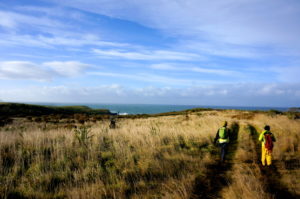
When we cross the waterlogged farmland, the gusty wind allows us some warm rays of morning sun.
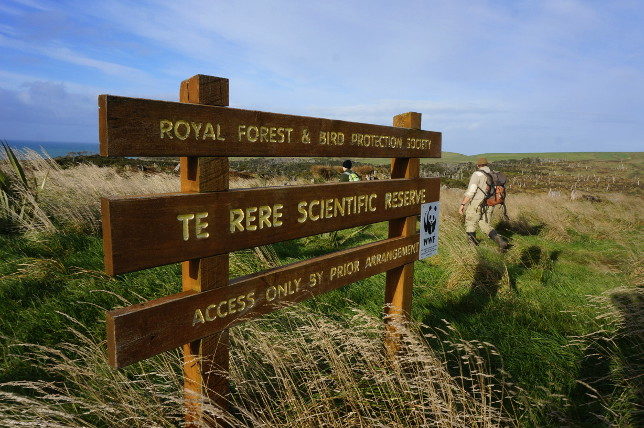
Our first site of conservation is the home of one of the few largest single populations of the yellow-eyed penguin. This little bird is not only one of the rarest of the 17 world-wide penguin species , but it is the only representative of the ancient megadyptes antipodes genus. Penguin fossils of this genus dating back 60 million years have been found in New Zealand.
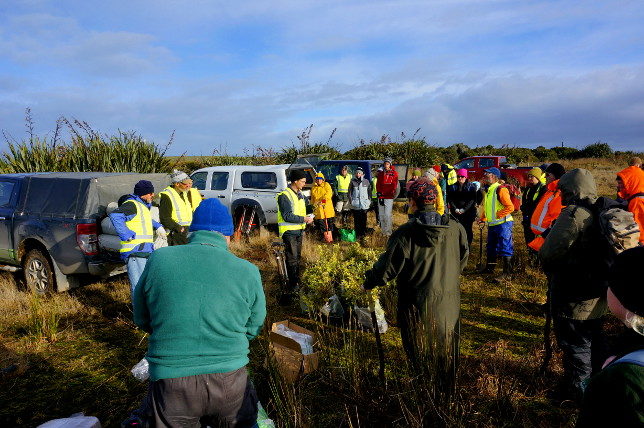
Time for some action
After a short introduction and planting demonstration we split up in a marked-off square of the 67 hectar measuring reserve. The cloud ceiling thickens, but the moral of the team is up.
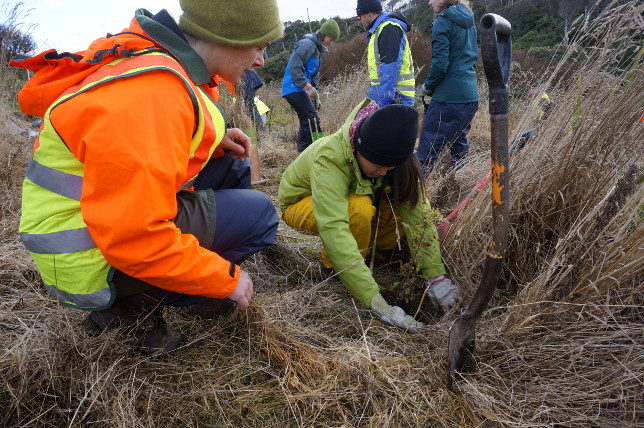
With a smile on our faces and a spade in our hands we start digging and planting: A few minutes later the first couple of lemonwood, boardleaf and totara are all set to grow towards the sky and provide shadow for the penguins in a few years.
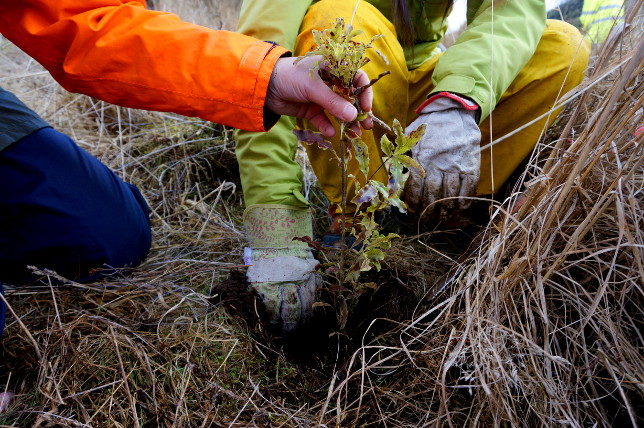
The story of Te Rere Reserve
Te Rere Reserve has been managed by the South Branch of Forest & Bird since more than 25 years. Unfortunately the Reserve was struck by a devastating fire in 1995. A lot of penguins died in the fire and the habitat of the remaining pairs got destroyed. Since then some of the very enthusiastic members of Forest & Bird and hundreds of other volunteers invest about 400 hours a year to regenerate Te Rere Reserve.
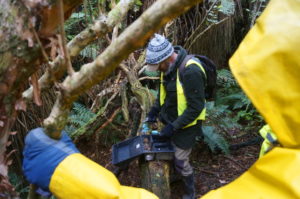
One of them is Fergus Sutherland: He is claimed as the official caretaker and has been involved in penguin conservation work since the very beginning. After all the ups and downs he is even more determined to save this stricken part of land and its rare inhabitants. These little well insulated fellas like it cosy and private: The yellow-eyed penguin nests deep in the coastal forests of New Zealand.
Te Rere is not only home to the yellow-eyed penguin, but also to a number of shearwater seabirds and the little blue penguin. I had the unique opportunity to accompany Ferguson to one of the secret hangouts of the little blue penguin. Forest & Bird built a number of nest boxes across the sheltered shore line. After our scramble through the dense bush we spot a baby penguin in one of the boxes, where we installed a camera to learn more about the nesting behaviour of the penguins. After a quarter of a century of research there is still a steep learning curve ahead.
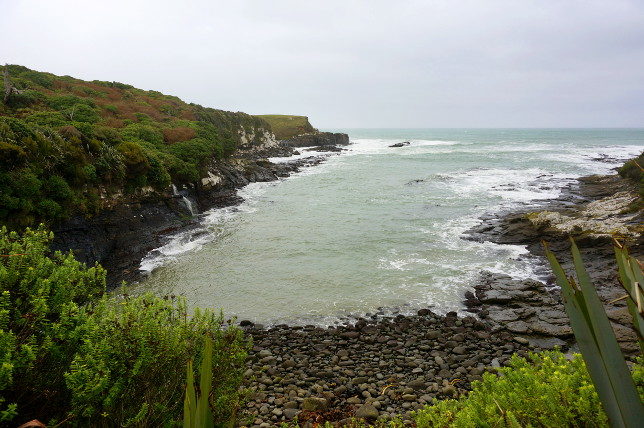
On the way back to the group I can see the waves breaking at the steep cliff. I can only speculate, how the yellow-eyed penguin makes its way up these rocks to nest in the bush.
Weed control or “The Catlins’ hand-saw massacre”
On Sunday we accomplish our mission of preserving native New Zealand forest in Otanomomo Scientific Reserve near Balclutha, where we help another branch of Forest & Bird Southland to protect an important remain of coastal podocarp forest. Together we fight the weed invasion by nasty european shrubbery like the mean black berry. The aim of their ‘close encouter’ weed control is to restore a self-sustaining native forest.

Even if the weather gods didn’t have mercy today, we make the most of our volunteering experience.

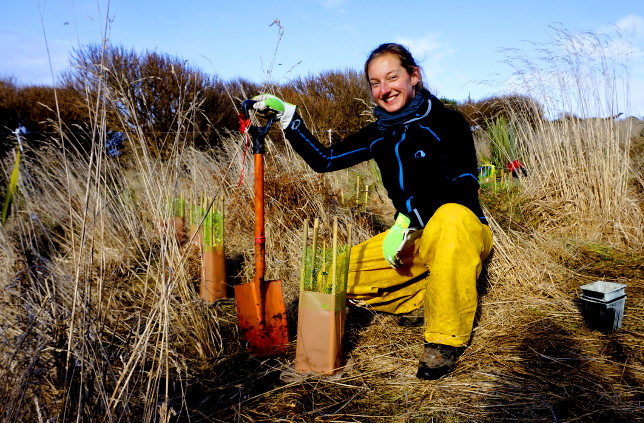
1 Comment